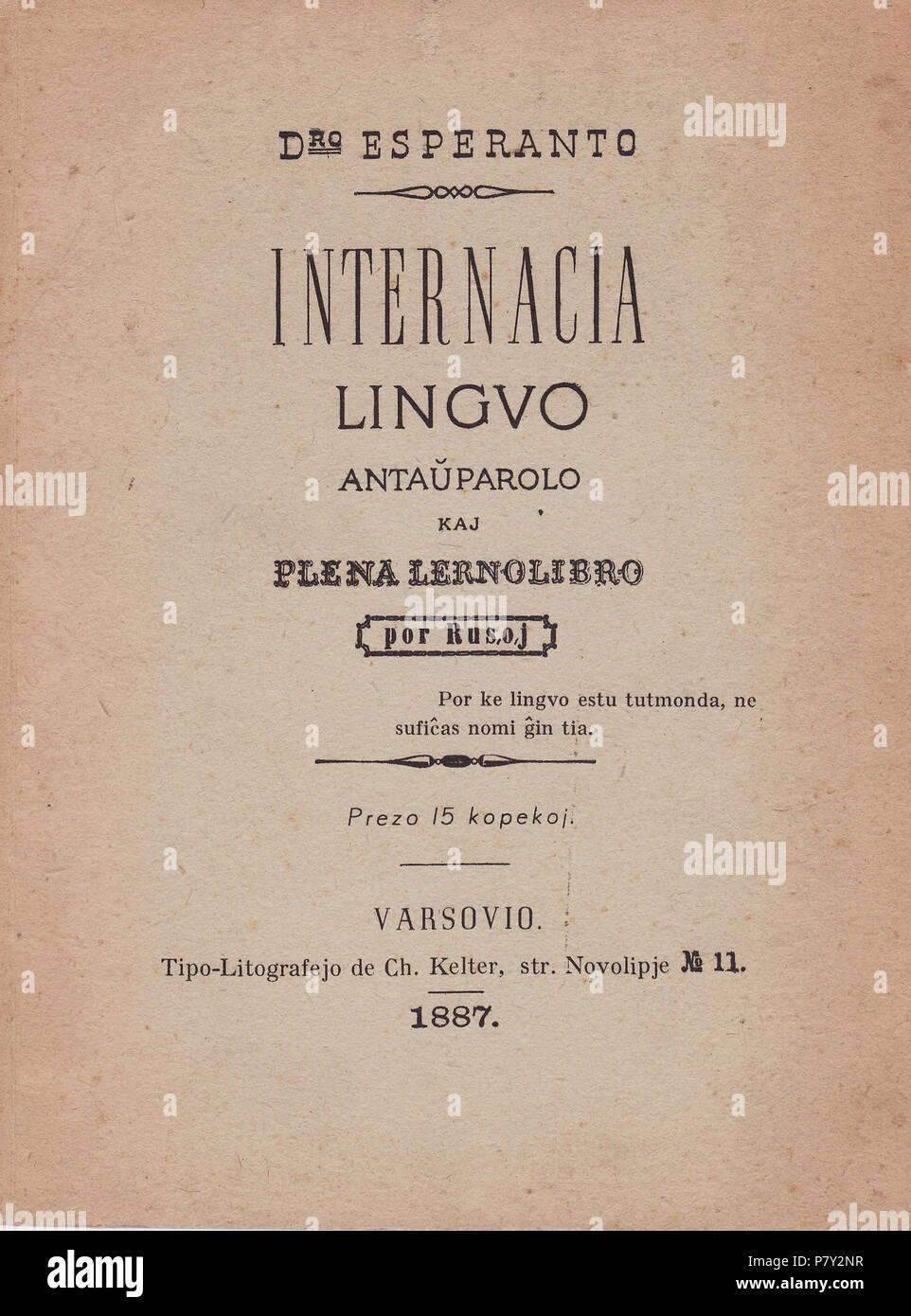Esperanto and Coding
What the international language and coding have in common


A Very Brief History of Esperanto
Esperanto is a "planned" or "constructed" language
Esperanto was first published in 1887 by a Polish ophthalmologist Ludwik Lejzer Zamenhof


The purpose was intended to create a universal auxiliary language
The language had to be easy to learn yet still be able to handle complex communication
Its underlying ideals of Esperanto we well suited for the ideals that were starting the take hold at the turn of the century

Esperanto grew beyond a language, but a community
During WWII and beyond
Esperantists were discriminated by both Hitler and Stalin
Over the next few decades, Esperanto's enthusiasm has ebbed and flowed
Internet and social media has brought a new and "different" life to Esperanto in the modern age.
Esperanto is considered the most succesful constructed language
Estimated to have 200K+ active speakers with 2000+ native Esperanto speakers
Famous Esperantists
JRR Tolkien
George Soros (through is father)
Pelé


How is Esperanto related to coding?
Esperanto is open sourced
Esperanto was not the first
Other languages failed to grow due to the original author of the language held control and make "breaking changes"
Esperanto was "given" to the community and Zamenhof declared that it's further evolution would happen via community.
Akademio de Esperanto
The Academy of Esperanto is an independent linguistic institution whose task is to preserve and protect the fundamental principles of the Esperanto language and to control its development.

Esperanto has been "forked"
Built on previous languages
Esperanto's root words come from other languages to make it more familiar.
Hundo === Dog
Luno === Moon
Rivero === River
Esperanto's 16 consistent grammar rules make them "easier" to use.
Nouns end with "o"
Adjectives end with "a"
Adverbs end with "e"
The past tense end with "is"
The present tense end with "as"
The future tense and with "os"
Kanti
to sing
Kantis === Sang
Kantas === singing
Kantos === will sing
Kanto === Song
Kanta === Song-like
Kante === while singing
Mia Hundo kantas bele nokte.
My dog sings beautifully at night
Esperanto's root words come from European languages, primarily Latin and germanic. This was "international" from the perspective of it's creator.
Uses composition
Esperanto roots can be combined to make new words
Skribi - to write
Maĉino - Machine
Skribmaĉino - typewriter
Esperanto has affixes that when composed with the base changes the word
et - small
eg - big
Domo - house
Dometo - cottage
Domego - mansion
More examples
aĵ - concrete manifestation
nova - new
manĝi - to eat
novo - newness
manĝo - meal
Novaĵo - news
Manĝaĵo - food
Affixes can be used as words
(when it makes sense)
ej - location of
lerni - to learn
lernejo - school
Ejo - Location
Esperanto has a NOT operator
In JavaScript we have ! operator
const bool = true;
const flipped = !bool;Esperanto has an prefix mal that does the same thing
Examples
Amiko - friend
Malamiko - enemy
granda - big
malgranda - small
plena - full
malplena - empty
dekstra - right (direction)
maldekstra - left (direction)
Mal !== bad
mal only flips the meaning to its opposite.
bona - good
malbona - bad
malo - oppositness
Esperanto has "decorators"
Nouns and adjectives need to agree on pluralization
ruĝa pomo - a red apple
ruĝaj pomoj - red apples
pomoj ruĝaj - red apples
Direct objects require an extra "n"
mi manĝas ruĝan pomon - I eat a red apple
ruĝajn pomojn mi manĝas - I eat red apples
pomojn ruĝajn manĝas mi - I eat red apples
Complex abstractions are possible, but simple abstractions are prefered
Active/Continuous Voice
-int-
-ant-
-ont-
Esper-ant-o === One who hopes
Parolanto === Speaker
Passive Voice
-it-
-at-
-ot-
vokita === called
Esperanto can create complex sentences easily
Mi estis Vokota
I was going to be called
Mi parolantis
I was (in the process) of speaking
Despite that, a good "abstraction" needs to solve a problem
Mi parolis vs mi estis parolanta
The difference here is nuanced
deck
By Justin Travis Waith-Mair
deck
- 126



